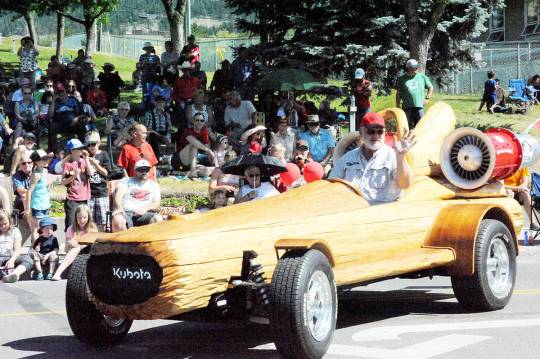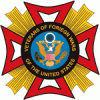
This blog is part of a weekly series called “Medal of Honor Monday,” in which we’ll highlight one of the nearly 3,500 Medal of Honor recipients who have earned the honor of wearing the U.S. military’s highest medal for valor.
In June of 2006, the 3rd Squadron of the 71st Cavalry Regiment (Recon), 3rd Brigade Combat Team, 10th Mountain Division, prepared to execute Operation Gowardesh Thrust, a squadron-sized operation in the Gremen Valley, Nuristan Province, Afghanistan.
The operation was designed to disrupt enemy operations in the Gremen Valley by denying the enemy freedom of movement and the use of critical staging areas near the border with Pakistan. The initial phase of the operation required a 16-man patrol to infiltrate into the area of operations in advance of the squadron’s main effort.
The patrol, consisting of snipers, forward observers and scouts, would maneuver north along a high ridge overlooking the Gremen Valley. From the high ground of the ridge, the patrol would provide real-time intelligence and help direct fires against enemy forces.
On the evening of June 17, 2006, a convoy transported the patrol to an established mortar firing position south of the village of Baz-Gal near the Gowardesh Bridge. The following morning, the patrol infiltrated on foot from the mortar firing position into their area of operation. For three days, the patrol moved north through rugged mountain terrain. Due to the difficulty of the climb and temperatures near 100 degrees, the patrol moved mostly at night or in the early morning hours, stopping during the heat of the day to observe the valley below.
On June 20, the patrol leaders, Staff Sgt. Christopher M. Cunningham and Staff Sgt. Jared C. Monti, the son of a teacher and nurse who grew up just outside Boston, halted the patrol on the ridgeline of a mountain northwest of the village of Gowardesh.
Cunningham and Monti selected a flat area on top of the ridge approximately 50 meters long and 20 meters wide, with a trail running along the eastern edge. At the southern end of the position, there were several large rocks, a portion of an old stone wall and a few small trees. The terrain sloped gradually upward to the north. At the northern end of the patrol’s position there was a line of dense vegetation composed of trees, heavy brush and smaller rocks. In between the large rocks to the south and the tree line to the north was a clearing approximately 40-50 meters in length. The terrain dropped off steeply on the eastern and western sides of the position. The rocks and trees around the position provided concealment and protection for the patrol as they observed the valley more than 1,000 meters below.
The patrol spent the night of June 20 observing from their position on the mountain. The following morning the patrol was dangerously low on both food and water. A re-supply mission was scheduled for that day. The re-supply was originally coordinated to occur in conjunction with the squadron’s main effort, which included a large air assault into the Gremen Valley. The heavy helicopter traffic associated with the air assault mission would have provided distraction for the re-supply, reducing the risk that the drop would compromise the patrol’s position. However, on the morning of June 21, Monti and Cunningham learned that the squadron operation had been pushed back until June 24. The delay extended the patrol’s mission by several days, making re-supply critical; however, the absence of other aerial traffic increased the risk that the re-supply would compromise the patrol. Because of the critical shortage of water, it was determined that the re-supply would go forward as planned despite the risk of compromise.
The drop zone was located about 150 meters from the patrol’s position. Cunningham and Monti brought the majority of their patrol to the re-supply drop zone to provide security and to transport the supplies back to the patrol’s position. A smaller group remained at the observation position to provide security and to continue to survey the valley below. At about 1:30 p.m., a UH-60 Black Hawk delivered food and water to the patrol. The patrol secured the supplies and began taking them back to their observation position.
Spc. Max Noble, the patrol’s medic, was one of the soldiers who remained at the observation position while the majority of the patrol picked up the re-supply. Noble was using a spotting scope to look down into the valley. Prior to the patrol’s return from the re-supply drop, Noble saw a local man in the valley using military-style binoculars to look up toward the patrol’s position. Noble informed Cunningham and Monti as soon as they returned. They watched the man observing the patrol’s position for several minutes before he picked up a bag and walked away.
As dusk approached, the patrol established a security perimeter around their position and scheduled guard rotations. The patrol members then divided up the supplies and prepared for the night. Cunningham and Monti sat behind one of the large rocks at the southern end of the patrol’s position and discussing courses of action in the event that their position had likely been compromised.
At about 6:45 p.m., a member of their unit heard the shuffling of feet in the wood line immediately to the north. Before he could react, the patrol’s position was hit by a barrage of rocket-propelled grenades (RPGs), medium machine gun fire and small-arms fire from the wood line. An enemy force of approximately 50 fighters was moving in under cover from two support-by-fire positions above the patrol to the north and northwest. Members of the patrol could hear enemy fighters giving commands as they moved through the wood line at the northern end of the patrol’s position.
At the time of the attack, the six patrol members at the northern end of the patrol’s position immediately dove for cover as the enemy opened fire. The attack came so quickly and with such ferocity that many of the patrol members at the northern end of the position were unable to maneuver to get to their weapons. Others had their weapons literally shot out of their hands by the intense fire
From behind the rocks at the southern end of the patrol’s position, Monti and Cunningham returned fire, attempting to cover for the patrol members falling back from the north. However, the intensity of the enemy small arms fire and frequent volleys of RPGs made it dangerous for the patrol members to expose themselves in order to accurately aim their return fire.
As the patrol fell back behind the large rocks, Cunningham and Monti took charge of the defense. They quickly set up a perimeter, posting soldiers to guard potential approaches on their flanks. They directed return fire and cautioned their soldiers to control their fires to conserve ammunition. Monti grabbed his radio handset and cleared the network to call for fire. He calmly informed headquarters that the patrol was under attack, heavily outnumbered and at risk of being overrun.
While still communicating with the squadron headquarters and under intense fire, Monti periodically dropped the handset to engage the enemy with his rifle. At one point, he noticed a group of fighters closing in on the western flank and disrupted their attack with several bursts from his weapon. As the enemy closed within 10 meters of the patrol’s defensive perimeter, Monti threw a grenade into their path. Although the grenade was inert, its presence disrupted the enemy advance and caused them to scatter and fall back, denying the enemy a position on the patrol’s flank. Monti then went back to the radio and continued to call for support.
At this time, the initial volley of mortar fire began to fall on the advancing enemy, driving them back to a wood line north of the patrol’s position. The mortar firing position asked Monti to adjust the incoming rounds; however, the enemy fire from the wood line was so extreme that Monti was unable to even raise his head up to observe the incoming rounds.
As the enemy was driven back into the wood line, Monti and Cunningham took accountability of their soldiers. They quickly realized that one soldier, Pfc. Bradbury, was unaccounted for. Monti called for Bradbury several times and received no response. Finally, over the din of near constant enemy fire, they heard. Bradbury weakly reply that he was badly injured and unable to move.
Bradbury, who was a SAW gunner on Monti’s team, lay severely wounded in a shallow depression approximately 20 meters in front of the patrol. The shallow depression prevented the patrol from actually seeing Bradbury, but it also protected him from the enemy, just 30 meters away.
Monti recognized that Bradbury was not only exposed to enemy fire, but also to the incoming indirect fire. He called out to Bradbury to reassure him that he would be alright and that they were coming to get him. Cunningham yelled across the rocks to Monti that he would go for Bradbury. However, Monti insisted that Bradbury was his soldier and that he would go and get him.
Monti then handed the radio handset to another soldier and said, “You are now Chaos three-five,” which was Monti’s call sign. After tightening down his chin strap, Monti, without hesitation or concern for his own safety, moved out from behind the protection of the large rocks into the open and into the face of enemy fire.
The wood line immediately erupted as dozens of enemy fighters focused their fire on Monti, running towards his wounded soldier. Repeatedly hindered by enemy fire, and timing his movement to the sound of the exploding rounds, Monti, for a third time, rose from his covered position and moved into the open, knowing he again would be the focus of the enemy fire.
On his third attempt, Monti took several lunging steps through withering fire towards his wounded soldier before an RPG exploded in his path. Before he could reach cover, Monti fell mortally wounded only a few meters from Bradbury. Monti attempted to crawl back towards the stone wall, but was unable to move far due to the severity of his wounds. The patrol called out to Monti and tried to encourage him to remain conscious. Monti spoke briefly with the members of the patrol, telling them that he had made his peace with God. He then asked Cunningham to tell his parents that he loved them. Shortly thereafter, he fell silent.
Bradbury, critically injured and weak, was eventually reached by medics, but the cable hoisting him into the safety of the helicopter broke and he fell to his death, as did Noble, the unit medic assisting him.
Monti was posthumously promoted to sergeant first class on June 22, 2006. He was awarded the Medal of Honor by President Barack Obama on Sept. 17, 2009.


























